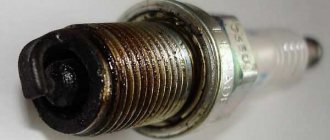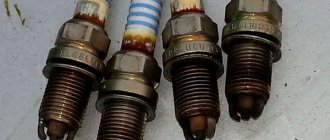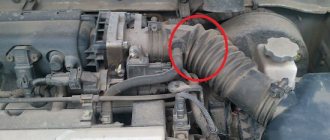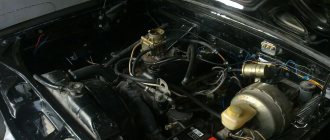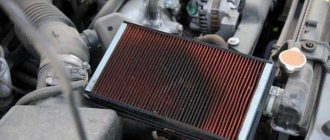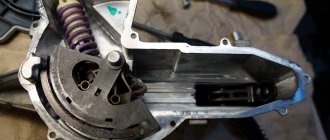One way to assess the proper functioning of the power plant is to check the condition of the spark plugs. Any disruption of the processes taking place in the cylinders will immediately leave marks on these elements. In most cases, spark plugs provide insight into the operation of the ignition and power systems. But there are also symptoms indicating problems with other components of the power plant.
One such sign is the detection of oil traces on the spark plugs. Lubricant on the spark plugs can appear due to a number of specific malfunctions. Some of them do not pose any particular danger to the engine, but others are a signal of serious problems that can lead to expensive repairs.
Causes of oil on spark plugs
If the candles are covered with oil, then first of all it is necessary to determine exactly which part has the most of it. Many car owners are faced with a situation where only the threads and body are coated with lubricant, while the electrodes are dry and have a normal color (light brown). But it also happens that the entire base ends up in oil.
At the same time, in addition to traces of lubricant on the spark plugs, a malfunction with the engine manifests itself in other ways - deterioration in dynamics, increased exhaust smoke, oil burns. In order for it not to be the cause, it must be eliminated.
Most often, the appearance of grease marks occurs due to wear and damage:
- Valve guides.
- Oil seals.
- Valves.
- Cylinder head gaskets (cylinder head).
- CPG elements (cylinder-piston group).
Traces of lubricant on the body and threads are mentioned for good reason, since oil can get onto the spark plug not only from the cylinder, but also due to external leaks. So, on some cars, a loose fit of the cylinder head cover gasket is considered a “disease”. As a result, candles seep through leaks and get into the wells. Thus, oil accumulates in the wells of the spark plugs and when unscrewing the spark plugs, both the body and the threads are simply smeared in the accumulated lubricant. The problem is “treated” by replacing the gasket and coating it with sealant.
What does the color of soot deposits indicate?
Using a color shade, you can quickly understand what problem areas are in the engine of your car. However, simply replacing samples will not solve the cause of soot - new spark plugs will very quickly become unusable. Currently, there are 3 main colors of deposits in the ignition system:
Each of the colors presented indicates the occurrence of a specific malfunction or group of problems in the car’s engine.
The appearance of black soot
This plaque can be either dry or oily. The appearance of a black coating in dry form indicates that an enriched mixture is being supplied to the engine. Candles become covered with such soot as a result of:
- Incorrect operation of carburetor systems;
- Clogged air filters;
- High pressure at the stage of fuel supply to the fuel rail;
- Little spark energy;
- Weak compression.
If black oily deposits appear, it is necessary to check the possibility of oil getting into the combustible fuel mixture itself. As a rule, oil leaks as a result of wear of the oil scraper type piston ring set. In addition, the cause of oil deposits can be damage to the valve system caps.
Advice: if you have recently repaired a VAZ-2114 generator, be sure to check the spark plugs. Perhaps some of the problems with the car lie there.
The appearance of white soot
White deposits in the ignition system can have several color shades:
- Slightly ashy colored deposits. Appear as a result of engine operation on low-quality gasoline samples. To solve the problem, you just need to remove and wipe the spark plug rings, after which they will become suitable for use again.
- Shiny white soot. Indicates the appearance of erosion on the body of the contact electrodes. It occurs as a result of overheating of the ignition system, and the cause may also lie in an insufficiently enriched fuel mixture. In addition, problems with early ignition and breakdowns in the cooling system can give such a tint. If the deposits are shiny white, it is best to replace the entire set.
Tip: if the spark appears weakly, a situation may occur when the car jerks when you press the gas pedal. This is also a common cause of a faulty spark plug set.
The appearance of brown or red soot
If red/brown deposits appear, you need to diagnose the fuel mixture entering the engine. Often this situation occurs when a large number of special additives are introduced into the car oil, which flush the engine cooling system. Also, the brown color on the spark plugs indicates that the engine has been running for a long time on a type of leaded gasoline.
As a result of the appearance of a brown conductive coating on the surface of the insulator, you will find disturbances in the normal formation of sparks. The car may not start for a long time and run intermittently at high speeds. To fix the problem, just clean the fuel system by adding new gasoline.
Tip: if there is no spark in the spark plugs, pay attention to the gaps in the electrodes. Perhaps they are covered with carbon deposits. To solve the problem, simply cleaning the spark plugs is not enough - you will need to replace the entire set, since if the situation repeats, problems will arise in the engine.
Consequences of a malfunction
If you ignore the problem of lubricant getting into the cylinders, which is indicated by traces of oil on the spark plug, the consequences will be very serious. The lubricant is not able to completely burn out in the cylinders, moreover, the part of it that does burn out becomes the cause of a large amount of soot.
This carbon deposits on the internal surfaces of the cylinder, which affects the processes taking place inside it, and also leads to the occurrence of rings. Because of this, the amount of oil entering the combustion chamber increases sharply. As a result, the engine power drops significantly, and it begins to intensively consume lubricant and fuel. Restoring the engine after this is quite difficult and financially expensive, since a major overhaul is required.
Why do the spark plugs flood when starting the engine when cold?
Let's start with the fact that in the warm season the problem of flooding candles is not as pressing as in cold weather. As a result, it becomes more common that the car's spark plugs flood in the cold. The main signs of flooded candles:
- the problem manifests itself in such a way that the crankshaft is cranked by the starter, but the engine does not “catch”;
- there is a smell of gasoline coming from the exhaust pipe, the smell is distinct when the engine is cranked by the starter;
- after unscrewing the spark plugs, the threads and electrodes are in gasoline, and dark carbon deposits are also present at the bottom of the spark plug;
Let us add that fuel filling occurs regardless of what power system is installed on a particular vehicle (engine with injection injection or carburetor version). The only thing, if you compare the injector and the carburetor, fills the spark plugs on the injector in cold weather somewhat less often. Also, some filling features may differ slightly, taking into account the individual characteristics of a particular power system.
So, the spark plugs flood (especially at subzero temperatures) as a result of the fact that fuel enters the combustion chamber from the power system, but the fuel does not ignite. The spark plugs become wet, after which the further normal process of spark formation becomes impossible, that is, the engine will no longer be able to start.
As practice shows, the list of reasons why spark plugs fill on a cold injector or when a similar problem occurs on a carburetor car includes several main points:
- Low battery charge. In this case, the battery is discharged by more than 40-60%. When the outside temperature drops, the battery may not produce the required power sufficient for normal operation of the starter and the functioning of the ignition system. As a result, fuel is supplied by the power supply system to the cylinders, but ignition does not occur and the fuel floods the spark plugs.
- Ignition system malfunctions. Problems can arise both with the spark plugs themselves and with the high-voltage wires. If the spark plugs are old, then they may have incorrect gaps, various defects in the body and electrodes. The spark on such spark plugs may be weak or absent. As for high-voltage wires, they can be damaged, contacts fail, etc. At the same time, you should also check other structural elements of the ignition system, which may cause the lack of a spark on the spark plug.
- Low quality fuel. In winter, the ease of ignition during a cold start greatly depends on the purity and total amount of impurities in the fuel. It should also be taken into account that in winter condensation may accumulate in the fuel tank, which also ends up in gasoline. The combination of such factors leads to the fact that there is a spark on the candles, but the fuel cannot ignite in a timely manner. The result is a non-working engine and wet spark plugs.
We also recommend reading the article on how to properly charge a car battery with a charger if it is maintenance-free. From this article you will learn about the features of charging such batteries, what parameters need to be observed and set on the charger, as well as how to fully charge the battery without harm to the battery.
In practice it looks like this. For example, on injection engines, the ECU takes into account the outside and engine temperature, the amount of oxygen in the air entering the engine, etc. The control unit sends the appropriate command to the injectors to increase the amount of fuel if necessary, that is, it enriches the fuel-air mixture for a confident cold start and further stable operation of the power unit (the so-called warm-up speed XX). In accordance with the signal received from the ECU, the injection nozzles inject more fuel.
Now let's imagine that the engine is no longer new, that is, there is some wear on the CPG. This means that the compression in the cylinders is still within acceptable limits, but is no longer ideal. You can also add to this a slightly weak battery, thickened oil in the engine crankcase and deposits on the spark plugs. It turns out the following:
- injectors actively supply fuel that is not the best quality into the cylinders, which also does not evaporate well at low temperatures;
- the starter slowly turns the crankshaft in thickened lubricant from an undercharged battery;
- in a cold engine, parts do not expand due to heating, gaps are increased, compression is reduced;
- the ignition system generates a weak spark on dirty spark plugs, which is not enough to ignite the fuel-air charge;
Of course, the above example describes a whole range of possible problems. However, taking into account the above, it becomes clear that each “link”, even taken separately, can already lead to difficulties during start-up and certain failures. In other words, problems with the battery or high-voltage wires alone may be enough for the driver to fill the spark plugs in the winter after one or two unsuccessful attempts to start. It turns out that the minimum impulse to ignite the fuel is simply not enough or there was no spark to begin with. Separately, we would like to add that if a spark plug on a cylinder is flooded, and only one turns out to be problematic, then we should not exclude the possibility of low compression or other problems only in this particular engine cylinder.
What can be done
If the spark plugs are filled with oil, then identifying the cause is not so difficult, but eliminating it can be a troublesome task.
If we talk about the case of a leaking valve cover gasket described above, then everything is very simple - oil is noticed in the spark plug wells - the sealing element requires replacement.
It’s worse if grease is found on the bottom of the spark plug (and it can be on one, several or all spark plugs).
A compression test will partially help here. If the rings are stuck or the valves do not fit tightly, it will certainly decrease. If there are traces of lubricant on the spark plugs, but the compression is fine or even increased (which happens due to the oil present in the combustion chamber, which acts as a seal in the existing gaps), you will have to disassemble the cylinder head to assess the condition of the oil seals and valve guides. In general, it is the last two elements that are the most common reasons for lubricant getting into the cylinders, including spark plugs.
Do not forget that the engine itself has a certain resource. If it is noticed that all the spark plugs are in oil, and the compression has dropped significantly below normal, it may be worth considering a major overhaul, since the degree of engine wear has reached critical levels.
Useful tips
As you can see, replacing the sealant under the valve cover is not a complicated procedure. The main requirements include thorough cleaning of the old layer and proper application of fresh sealant to the surface.
The applied layer must be even and no interruption is allowed. It should also be noted that the sealing compound must also be used to treat the joints between the connections of the spark plug wells, having previously removed the old sealant from there.
Let us add that these areas, as a rule, are generously covered with a sealing compound, which will require some effort to fully clean such surfaces. To process the connections of the spark plug wells, a special red sealant is used, which can be purchased at car dealerships.
If only one engine needs to be repaired, then it will be enough to purchase a small tube of heat-resistant sealant. You can also read about selecting the best sealant for the engine in our separate article.
It should be noted that the use of sealant if the valve cover on a particular internal combustion engine is installed through a rubber gasket is undesirable. In this case, it is necessary to purchase a new high-quality gasket, after which the mating surfaces are checked. Next, the new valve cover gasket is installed in place, after which the valve cover is tightened, taking into account the order and torque of the fasteners.
Causes of white soot
The white deposit can be shiny, matte or raised, with growths on the central electrode. The most dangerous is a glossy coating, which includes a large number of metal particles. This condition of the spark plugs indicates constant overheating of the pistons and electrodes, which can lead to failure of the internal combustion engine.
A thin and matte light coating more often occurs when using low-quality fuel.
Incorrect fuel mixture adjustment
As the air supply to the fuel mixture increases, its ability to ignite decreases. This leads to problems with starting the engine, overheating of spark plugs and internal combustion engines, jolts and malfunctions while driving.
Driving with a lean mixture does not allow the engine to develop full power and leads to the appearance of a whitish coating on the electrodes. In addition to mechanical reasons (for example, gasoline leaks), provoking factors can be problems with sensors or an electronic unit that correlates the operating mode of the internal combustion engine and the characteristics of the fuel-air mass.
When the mixture becomes lean, it is recommended to check the throttle opening angle, the integrity of the gas tank and fuel line, the condition of the jet (for carburetors) and the fuel level. If the problem arose after changing gas stations, you should return to the previous brand of fuel.
In rare cases, a light coating occurs due to the penetration of antifreeze into the internal combustion engine.
Air leak
Air leakage into the fuel mixture is another reason for its leanness. Most often the problem is found in the following areas:
- idle speed sensor seals;
- pipes connecting the manifold and the air filter;
- intake manifold (air penetration is explained by the appearance of cracks and depressurization).
A drop of oil
To carry out this test you will need a blank sheet of A4 paper or filter paper. In the second case, the oil will dry out faster, and the samples here will look fresher. The procedure itself is quite simple.
You need to start the car engine and warm it up to operating temperature. After this, use a dipstick to take a sample of engine oil, a drop of which just needs to be dropped onto the paper. Next, you need to dry the material for two days. After this time, it will only take a few minutes to analyze the stain.
The material prepared in this way can already be analyzed. Here you need to analyze the following points:
- oil drop zones, their diameters;
- color and pattern of the spot;
- uniform spreading of the lubricant.
In total, four elements of the oil sample can be distinguished:
- The central part corresponding to the initial concentration of the oil drop before it begins to spread over the paper. It is here that the sediment of insoluble heavy impurities of mechanical origin is concentrated.
- An area located around the central core. It may not be present in clean motor oil after it has recently been changed. Also, if the lubricant is heavily contaminated, it is almost impossible to distinguish the edge zone due to the saturated central part.
- Diffuse area, which is a wide gray ring covering the core, marginal zone.
- The circle occupying the outermost position is characterized by the lightest color.
Using these components of an oil slick, you can quite accurately determine the condition of the engine oil. Based on such data, it is much easier to explain the reason for its increased consumption.
If the engine oil remains clean, this is indicated by a large light spot that completely disappears after a few hours. When the motor lubricant is watered, the third and fourth elements are distinguished by a ragged configuration against the background of the absence of pronounced forms. When yellow or light brown shades appear in the diffusion zone, this indicates oxidation of the oil due to critical overheating of the power unit.
Valve seal suitability test
It is advisable to carry out such diagnostics together:
- For this test, you need to start the car engine, warm it up to operating temperature and let it idle for 4-5 minutes.
- Then ask your partner to use the gas pedal to increase the engine speed to 3000-4000 per minute.
- At this time, you need to watch the exhaust.
- If immediately after pressing the accelerator pedal thick bluish smoke comes out of the chimney and then disappears, this indicates problems with the valve seals.
- This is also evidenced by an oily coating on the tip of the pipe.
- If there are no malfunctions in the power unit, even with a sharp change in speed, smoke will not appear from the exhaust pipe.
CPG condition test
This procedure must also be carried out together. One person should control the accelerator pedal, and the other should monitor the cleanliness of the exhaust gases.
To check the condition of the piston group, you also need to warm up the engine and let it idle for about five minutes. Then sharply press the gas to 3500-4000 rpm. In cases of malfunction of the piston group, thick exhaust will constantly pour out of the pipe. Changing the speed will not affect the exhaust in any way. This phenomenon accurately indicates a “dead” piston group of the car.
avtoexperts.ru
A fairly common phenomenon is the appearance of oil on the spark plugs, which negatively affects the operation of the engine, ranging from unstable starting to decreased dynamics, increased fuel consumption and a general decrease in the power of the power plant.
In addition, the waste of motor oil, which, as is known, is more expensive than gasoline and significantly hits the pockets of car enthusiasts, can increase quite significantly, plus the constant “triplication” of the engine and unstable idling cannot but stress the owner.
What are the reasons for the appearance of oil on candles? In this article, we will analyze the main ways oil gets into the engine combustion chamber and, as a result, onto the spark plugs.
Other deposits and deposits
White plaque is not the only possible deviation from the normal state of the electrodes. To correctly assess risks, you need to know the meanings of other shades of deposits.
Black
The following problems can cause the appearance of black soot:
- Over-enriched mixture, fuel sensor problems (dry residue remains on the electrode).
- Unsuitable “cold” candles.
- Air filter clogged.
- Oil combustion (shiny, sooty electrode and thread).
- Loose nozzle fit or broken check valve.
With late ignition and a small advance angle, the spark plugs turn black even with the correct choice of heat rating and gasoline.
Red and brown
Scarlet, brown and red soot is a consequence of the use of low-quality fuel with ferrocene, manganese or lead additives. A thick red layer can make it difficult for a spark to pass through and disrupt the operation of the engine, so when it appears, it is recommended to change the brand of oil or gas station.
Zolny
Ash soot can be both light and dark. When it appears, increased oil consumption, decreased power, and darkening of the exhaust gases are observed.
The cause of the problem is worn or stuck piston rings.
Erosion
If the spark plug is defective, early ignition, or prolonged operation on low-octane or low-quality fuel, erosion (destruction) of the central electrode may occur. At the same time, the power of the internal combustion engine decreases, and when driving, jerking, instability at idle and “triple” are observed. The part requires immediate replacement.
Gasoline on spark plugs
Filling of spark plugs occurs when there is a malfunction of the fuel system, injector or carburetor, less often when starting in cold weather. To solve the problem, you need a complete diagnosis of the car and repair of damaged parts of the internal combustion engine.
Oil and fuel deposits
A shiny yellow or dark coating indicates grease penetration and wear of the valve seals. A characteristic accompanying symptom is blue smoke and high engine oil consumption.
Fuel carbon deposits occur when valves become depressurized or the piston system wears out. At the same time, against the backdrop of a drop in power and unstable operation of the internal combustion engine, gasoline consumption increases.
In more rare cases, a green coating is observed on the electrodes. Its cause may be the presence of additives in gasoline or the ingress of antifreeze into the combustion chamber.
The spark plugs are flooded: what should the driver do?
Let's say the engine won't start and you are sure that the reason is the gasoline on the spark plugs. In such a situation, it is useful to know what can be done if the spark plugs are flooded, how to start the car in such conditions, etc.
Let's start with the fact that there are several available ways to dry flooded candles. To begin with, the instruction manual for many cars specifically states that if the spark plugs on an injection engine are filled with gasoline, then they need to be unscrewed using a spark plug wrench and dried. Then the engine should be cranked with the starter for about 10 seconds with the spark plugs removed. Next, the spark plugs are screwed back in, after which an attempt is made to start the internal combustion engine in normal mode.
Also, many drivers, if the spark plugs are flooded, start the engine with cylinder purging. In some cases, this method allows you to start the engine without removing the spark plugs. To purge the cylinders on an injection engine, you need to press the gas pedal all the way before starting. Next, the starter cranks the crankshaft for about 10 seconds, then the gas pedal can be released. Such actions help the power unit start. Purge occurs due to the fact that when the throttle valve is open, a large amount of air enters the cylinders, and the spark plugs dry out.
If the engine does not start with purging, then the spark plugs will have to be dried manually and their condition assessed. To do this, they need to be unscrewed, after which the carbon deposits are cleaned. You can use a soft brush (a toothbrush will do) or a brush with metal bristles. In the second case, you need to be careful and clean without effort. Candles are dried with a household or hair dryer, calcined on a gas burner, and placed in the oven. Next, you need to check the gap between the electrodes, after which you can screw the elements back into the engine. As a result, restarting should proceed without difficulty.
Let us add that many experts recommend not implementing the solutions described above if it is possible to immediately purchase new spark plugs. In simple words, cleaning and calcination leads to the fact that the service life of the spark plug after such actions is noticeably reduced, the gaps are lost, and these elements work worse after cleaning. It turns out that it is more profitable to purchase relatively inexpensive new spark plugs than to clean, dry and then reinstall the old ones. It is also noted that it is advisable to change simple spark plugs from the average price range every 15-25 thousand kilometers traveled, regardless of their condition and appearance.
It should also be taken into account that if new or cleaned spark plugs are constantly flooded, then the cause must be looked for separately, and not just solve the problem by cleaning or changing these elements. In this case, the engine needs in-depth diagnostics; the ignition system, injectors, ignition coil, Hall sensor, temperature sensor, etc. are checked.
